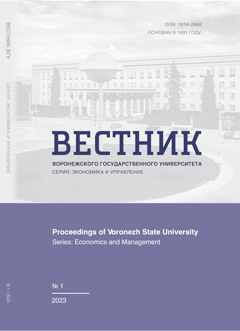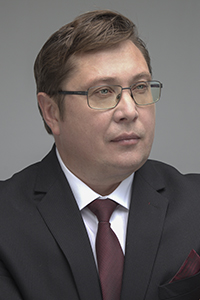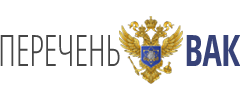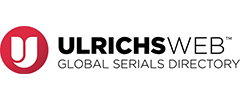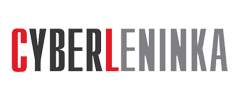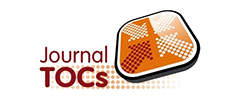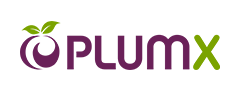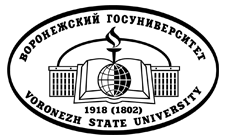Статистический анализ динамики, структуры и тенденций развития алкогольной отрасли РФ
Аннотация
Предмет. Будучи одним из важнейших источников финансирования государственного бюджета, алкогольная отрасль представляет особый интерес как объект для экономического анализа. Любое вмешательство в ее деятельность имеет вполне очевидные краткосрочные эффекты и, как правило, менее предсказуемые долгосрочные последствия, которые могут оказать пагубное воздействие на социально-экономическое развитие государства.
Цели. Статистический анализ динамики, структуры и тенденций развития алкогольной отрасли РФ и выявление факторов, оказывающих влияние на деятельность организаций алкогольной отрасли в условиях кризиса.
Метод. В процессе исследования использовались параметрические методы анализа данных и машинного обучения, метод описания, анализа и синтеза, метод изучения документов и результатов деятельности.
Результаты. В исследуемом периоде в значительной степени усилился контроль государства над сферой производства, хранения, поставок алкогольной продукции, что в определенной степени соответствует глобальной политике количественного ограничения и повышения качества (культуры) потребления алкогольной продукции. Обнаружены признаки перехода от модели потребления «северного типа» к «центрально-европейской». Выявлены тенденции в динамике объемов промышленного производства и розничных продаж алкогольной продукции, особое внимание уделено оценке структурных сдвигов в период активной фазы антиалкогольной реформы. Изменения в акцизной политике государства привели к увеличению нагрузки на производителей и товаропроводящую инфраструктуру. Спад в производстве и потреблении наблюдался практически по всем укрупненным группам алкогольной продукции. Установлено, что реализуемая акцизная политика в разной степени влияет на объем производства и розничных продаж укрупненных групп алкогольной продукции. Наиболее чувствительна к изменению акцизов крепкая алкогольная продукция, наименее чувствительна – винодельческая, производство которой в период рецессии только набрало обороты. Очевидно существование рисков, порождаемых агрессивной акцизной политикой и политикой лимитирования цен, которые могут привести к дестабилизации рынка и отрасли, а также вытеснению капитала в теневой сектор.
Metrics
Литература
Kotelnikova, Z. (2017) Explaining counterfeit alcohol purchases in Russia. Alcoholism : Clinical and Experimental Research. 41 (4), 810-819.
Nemtsov, A. V. (2011) A Contemporary History of Alcohol in Russia. – Stockholm, Sweden : Södersröms högskola.
Nemtsov, A. V. (2003) Alcohol consumption in Russia: Is monitoring health in the Russia Federation (RLMS) trustworthy? Addiction. 98, 386–388.
Nemtsov, A. V. (2003) Alcohol consumption level in Russia: A viewpoint on monitoring Health Conditions In the Russian Federation (RLMS). Addiction. 98, 369–370.
Neufeld, M. & Rehm, J. (2013) Alcohol consumption and mortality in Russia since 2000: Are there any changes following the alcohol policy changes starting in 2006? Alcohol and Alcoholism. 48(2), 222–230.
Popova, S., Rehm, J., Patra, J. & Zatonski, W. (2007) Comparing alcohol consumption in central and eastern europe to othereuropean countries. Alcohol and Alcoholism. 42 (5), 465–473.
Radaev, V. V., Salnikova, D. & Roshchina Y. (2020) The Decline in Alcohol Consumption in Russia from 2006 to 2017: Do Birth Cohorts Matter? Alcohol and Alcoholism. 55 (3), 323–335.
Rehm, J., Rehn, N., Room, R. et al. (2003) The global distributionof average volume of alcohol consumption and patterns of drinking. European Addiction Research. 9, 147–156.
Stickley, A., Razvodovsky, Y., McKee, M. (2009) Alcohol and mortality in Russia: A historical persperctive. Public Health. 123, 20–26.
Aksyutina, S. V., Ovsyankina, N. M. (2015) Critical issues of alcohol safety in the region. Economic and Social Changes: Facts, Trends, Forecast. 1 (37), 117–133. (In Russ.)
Latyntseva, M. B. (2017) The current state of an alcohol market in Russia. Herald of Omsk University. Series "Economics". 4 (60), 54–61. (In Russ.).
Levin, M. I. & Fenko, А. B. (2008) [Economic models of addictive behavior]. [Finance and business]. 4. (In Russ.) 13. Mustafina, S. Y. (2018) The statistical research of the production segment of the alcohol industry in the framework of food security of the state. Vestnik of economic security. 1, 331–336. (In Russ.)
Oganesyants, A. L. & Khurshudyan, S. A. (2015) Actual Aspects of the Alcohol Products Quality in Russia. Beer and beverages. 5, 12–14. (In Russ.)
Oganesyants, A. L. (2015) Improving Methods of Establishment Excise Taxes on Alcoholic Beverages. Beer and beverages. 3, 8–11. (In Russ.).
Radaev, V. V. & Roshchina, Y. М. (2019) Measuring alcohol consumption as a methodological problem. Sociology: methodology, methods, mathematical modeling (4M). 48, 7-57. (In Russ.).
Radaev, V. V. & Kotelnikova, Z. V. (2016) Changes in alcohol Consumption and Governmental alcohol Policy in Russia. Economic Policy. 5, 92–117. (In Russ.).
Romanovich, N. A. (2015) The alcohol in Russia: public opinion myths and reality. Sociological Journal. 21(3), 63–87. (In Russ.).
Skokov, R. Y. (2016) Development of the methodology for statistical analysis of markets for addictive goods. Voprosy statistiki. 5, 63–69. (In Russ.).
Skorobogatov, A. S. (2016) The effect of closing hour restrictions on alcohol use and abuse in Russia. Journal of Institutional Studies. 8(3), 72–90. (In Russ.).
Shaurina, O. S., Kharchikova, N. V. & Emelyanova, E. V. (2020) Current state, patterns of development and mechanisms of state regulation of the alco- hol market in Russia. Fundamental Research. 1, 46–50. (In Russ.).
Copyright (c) 2020 Ендовицкий Д.А., Коротких В.В., Яковлев Т.В.

Это произведение доступно по лицензии Creative Commons «Attribution» («Атрибуция») 4.0 Всемирная.
